Smallholder farmers in southern India have suffered from devastating droughts linked to deforestation. With regenerative organic agriculture, they're working to bring back yields while healing the land, too.
In late 2016, permaculturalist Malvikaa Solanki was sitting on her back porch in the quiet village of Yelachetti in the southern state of Karnataka when she spotted a row of cows making their way back to the village after grazing in the nearby forest. The animals were bare to the bone and nibbling on brown dirt. “One calf was on its hind legs, trying to raise itself up, but it was so weak that it toppled,” she recalls. Two days later, while driving home, she came upon a cow’s carcass lying in the middle of the road. These are Solanki’s most vivid memories of the devastating drought that swept across southern India between 2016 and 2018. Considered the worst drought in the region in 150 years, it decimated crops, wiped away livestock and forced many small farmers to abandon their fields.
But in Yelachetti, the drought sparked a collective movement to breathe life back into a devastated land. Led by Solanki and her non-profit Swayyam (meaning “self”), a group of small and marginal farmers used this moment to embark upon a long-term project to drought-proof their farmlands and reclaim food, fodder and livelihood security for themselves. They called it the 1000 Trees Project.
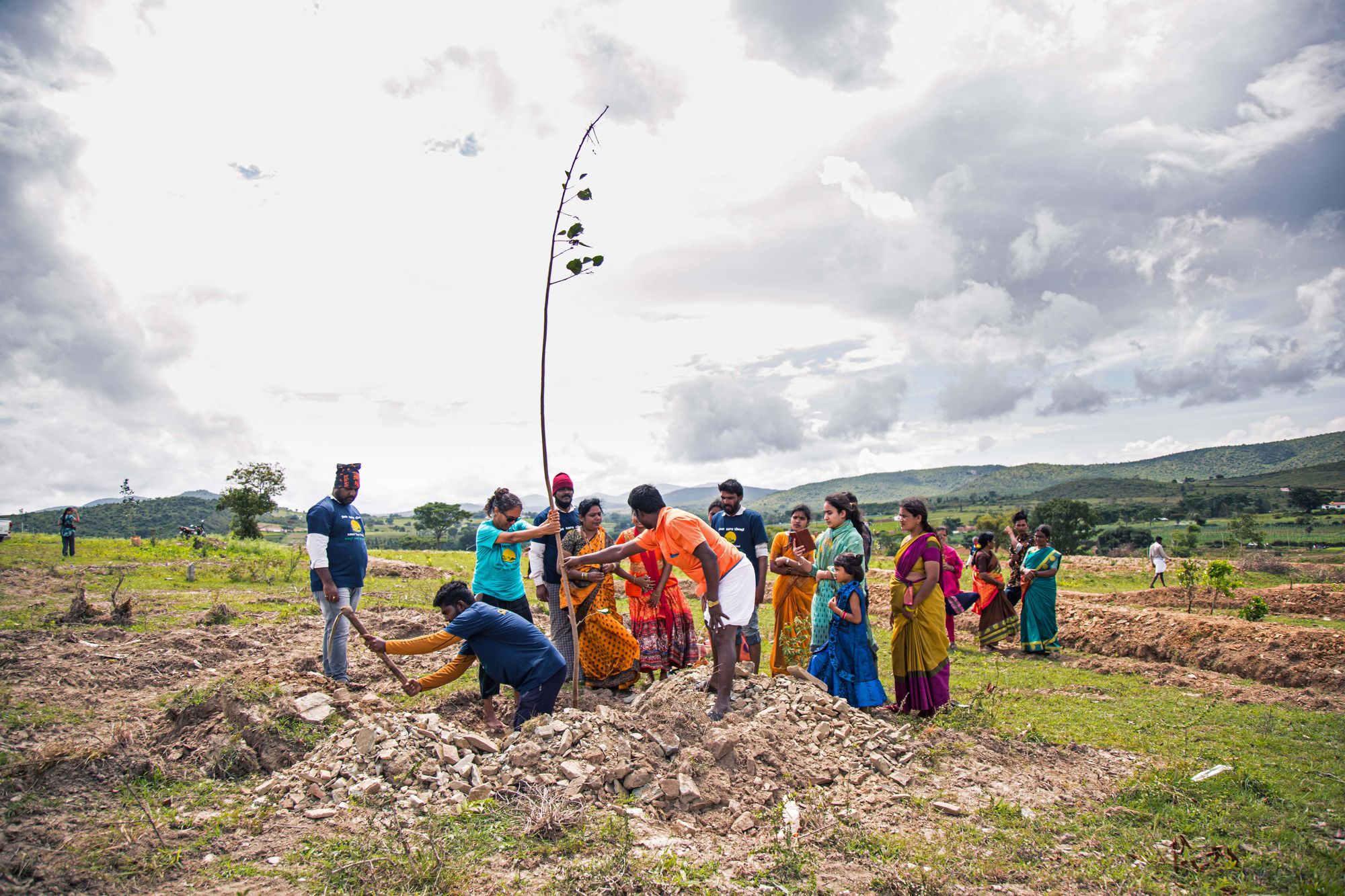
That such a movement would emerge in Yelachetti, where farmers have long contended with a semi-arid climate and protracted environmental damage, is no surprise. The village is located in the rain shadow of the Western Ghat mountains and averages just 50 to 60 centimetres of precipitation each year. In recent decades, unfettered deforestation has reduced rainfall even further and resulted in 15 droughts of varying intensities between 2001 and 2019. At the same time, decades of extractive farming practices such as water-intensive monoculture, heavy use of chemical inputs and mechanized irrigation have degraded the soil and depleted groundwater. Even before the 2016–2018 drought hit, vast expanses of Yelachetti lay barren, leaving farmers dependent on livestock or forcing them to sell their land and migrate to nearby towns and cities in search of alternative livelihoods.
Against this backdrop, Swayyam’s 1000 Trees Project is bringing farmers back to their fields by helping them reclaim fallow and abandoned land through regenerative agriculture. The term, coined by Robert Rodale in the 1980s, has varying definitions, but is perhaps best described in the words of environmental researcher Christopher J. Rhodes: a long-term holistic design and farming practice that “attempts to grow as much food using as few resources as possible in a way that revitalizes the soil rather than depleting it.” It simultaneously focuses on soil health, water management, biodiversity improvement and food quality, with the goal of creating a perennial, self-sustaining and self-maintaining ecosystem that can provide for its own needs and regenerate with little outside intervention.
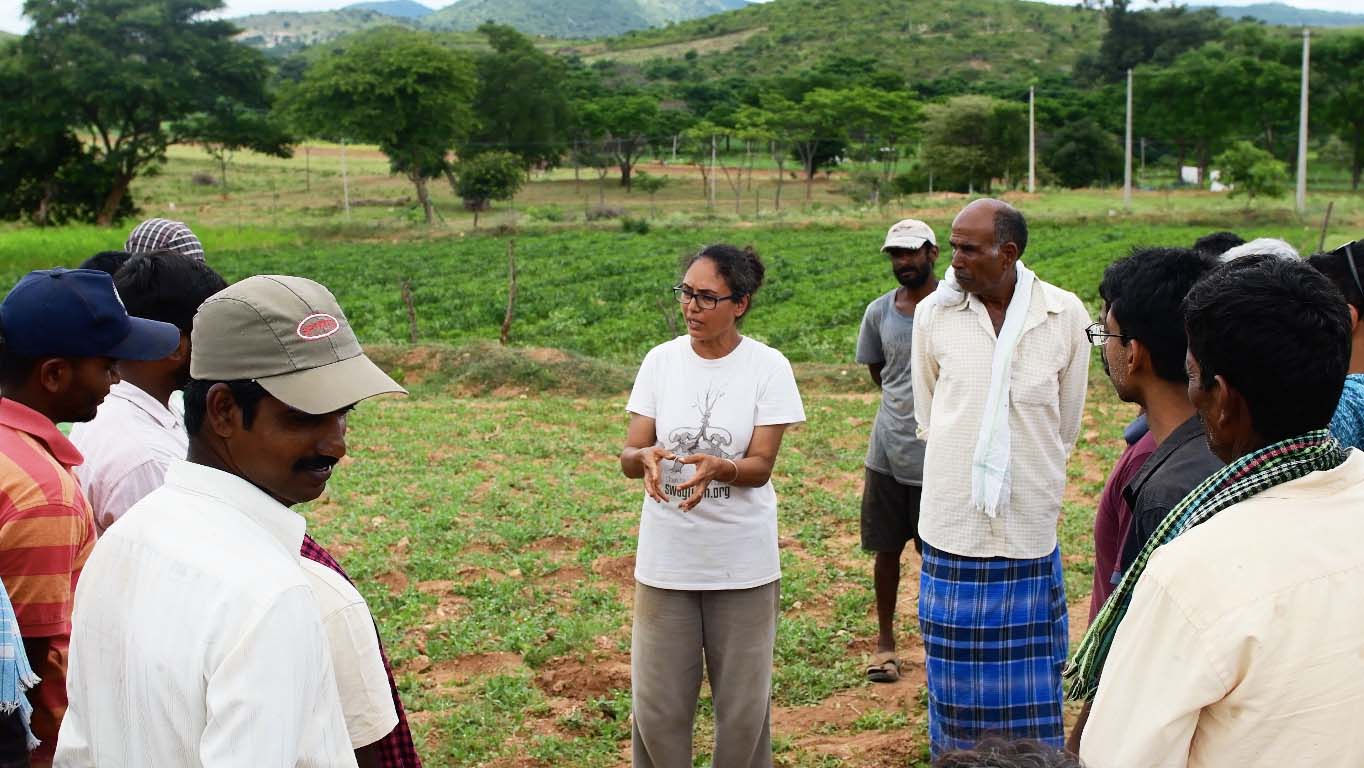
For the 1000 Trees Project, whose most pressing aim was to restore the fertility of unproductive farmlands, the regeneration work started with planting trees. For this reason, Swayyam’s founder Solanki prefers to use the term tree-based organic agriculture. Trees replenish degraded land by fixing nitrogen and other micronutrients, which is the first step in improving soil health, she says. Their deep root systems prevent soil erosion and water run-off, thus raising groundwater levels. Fallen leaves and twigs act as food for soil microbes, which in turn break down this organic matter into nutrients that trees can easily absorb. Once fully grown, trees support local biodiversity in the form of insects, birds and small mammals, which add more organic matter to the soil, and create a conducive microclimate on a farm by regulating the sun and wind. In drought-prone regions, trees also contribute to micro-cloud formation, which attracts macro clouds and increases the possibility of rain.
Farmers who sign up for the project commit to planting at least 100 trees of diverse species on every acre (1 acre = 0.4 hectares) of land they own and cultivate. They also agree to switch to organic manures and biopesticides such as jeevamrut, a combination of cow dung, cow urine, jaggery, pulse flour, soil and water that was widely used on India’s small farms before chemical inputs became available. Mindful of the scarcity of rainfall in the area, farmers harvest and conserve rainwater and mulch the soil to retain moisture, thus reducing their farms’ water needs. Finally, they practise polyculture and use heirloom seeds, both of which farmers had forsaken with the advent of agricultural modernization. “Each of these conditions are crucial for the regeneration process to set in,” Solanki says.
She speaks from experience, having used the same methods to revive her five-acre Open Shell Farm, which served as the blueprint for the 1000 Trees Project. When Solanki bought the land in 2014 it was “deforested, compacted, bare and overgrazed, with the subsoil exposed and no groundwater to speak of.” Over time, she rebuilt the topsoil using cow manure and other natural fertilizers and gradually introduced drought-tolerant trees.
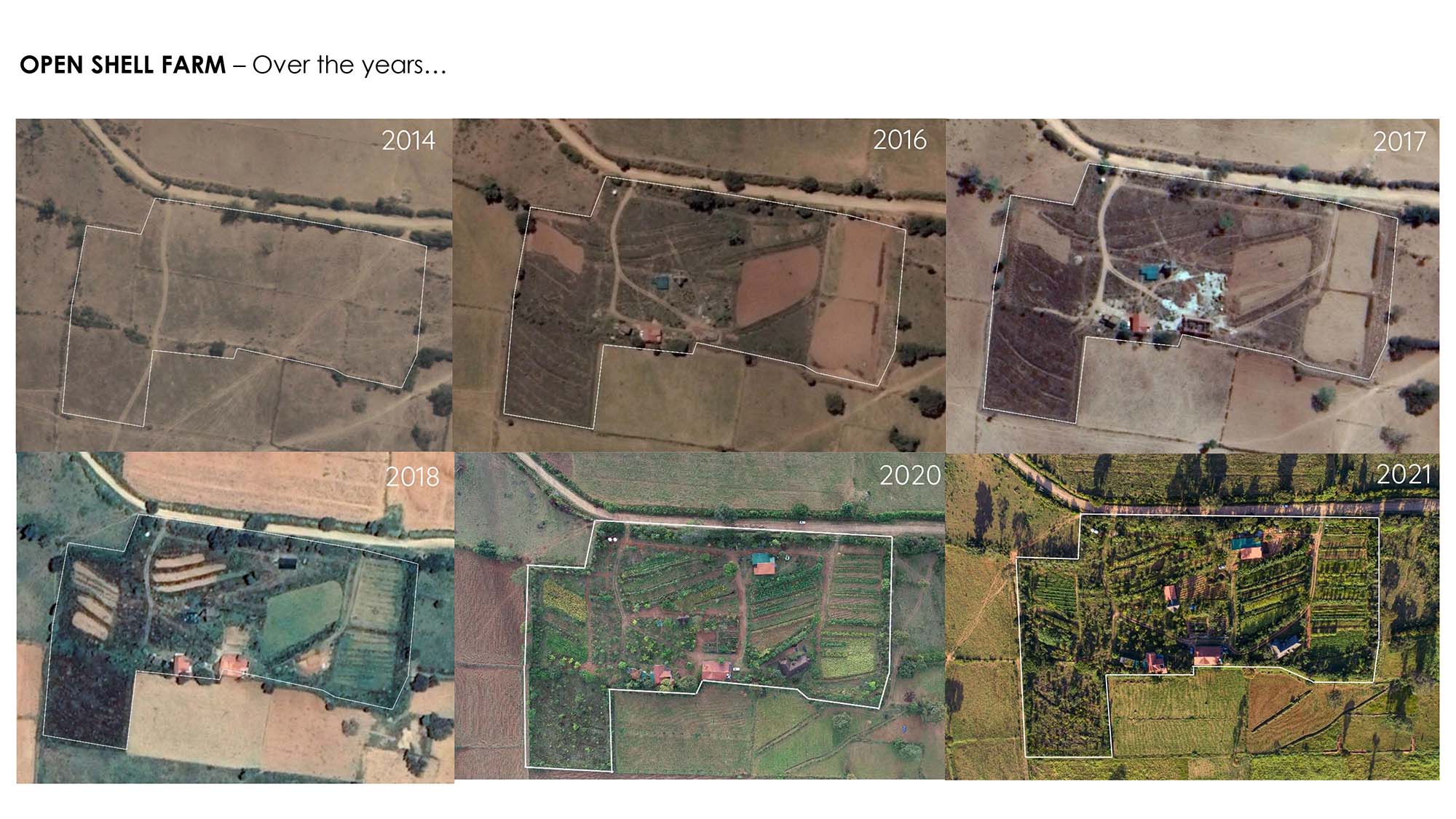
The first trees she planted were native forest species such as Ceylon satinwood (East Indian satinwood) and bamboo, which grow fast with very little care. Later, she added 10 to 12 species of fruit trees, including Indian gooseberries, soursops and custard apple, as well as a mix of timber, fodder and medicine trees. A strategically designed water system with trenches, diversion drains, pits and ponds enabled the farm to catch and store rainwater; cover crops and green manure kept the soil hydrated. Though the land was unforgiving at first, by 2016, she had managed to grow seven different types of crops, mostly staples like millets, pulses and oilseeds, as well as fodder for the cows. Solanki read that as a sign that her farm was beginning to acquire some resilience.
Then the rains failed. Even as Open Shell Farm yielded a good harvest, farmers in her community lost all their crops and most of their livestock. “That’s when I realized I am not resilient on my own farm unless the community around me is also resilient,” Solanki says. And so she started having informal discussions with small and marginal farmers in her neighbourhood about how a tree-based regenerative farming system could have eased the impact of the drought, and how it could safeguard them against future climate insecurities. The idea of the 1000 Trees Project emerged from these conversations.
But convincing farmers to grow trees was no easy task. “If I grow trees, where will I plant my crops?” they asked when Solanki first broached the topic. Their reluctance was not unreasonable in a country where most small and marginal farmers own one to five acres of land at best, leaving them with very little area to grow trees in addition to food crops. After discussing potential solutions with the community, Swayyam asked interested farmers to organize themselves into collectives. A single collective, they decided, would have at least four farmers with less than five acres of land each and a minimum combined landholding of 10 acres. “The idea was to pool land together to manage it better and share water, labour and other resources,” Solanki explains. Each collective was also required to include at least one woman farmer.
Finally, in late 2017, four neighbouring farmers, Nagappa, Mahadevappa, Sarasamma and Shankar, formed the first collective, Vasudha, sharing 10 acres of contiguous land between themselves. Swayyam bore three-fourths of the cost of fencing their land, a necessity since Yelachatti lies on the outskirts of the Bandipur Tiger Reserve, leaving its farmlands porous to wildlife. Since their land adjoined Open Shell Farm, Solanki was also able to share water with Vasudha’s farmers during the first year. In addition, she helped them put in place rainwater harvesting structures, trained them in pitcher and deep pipe irrigation as well as mulching techniques, and shared native seeds and high-quality saplings from the nursery at Open Shell.
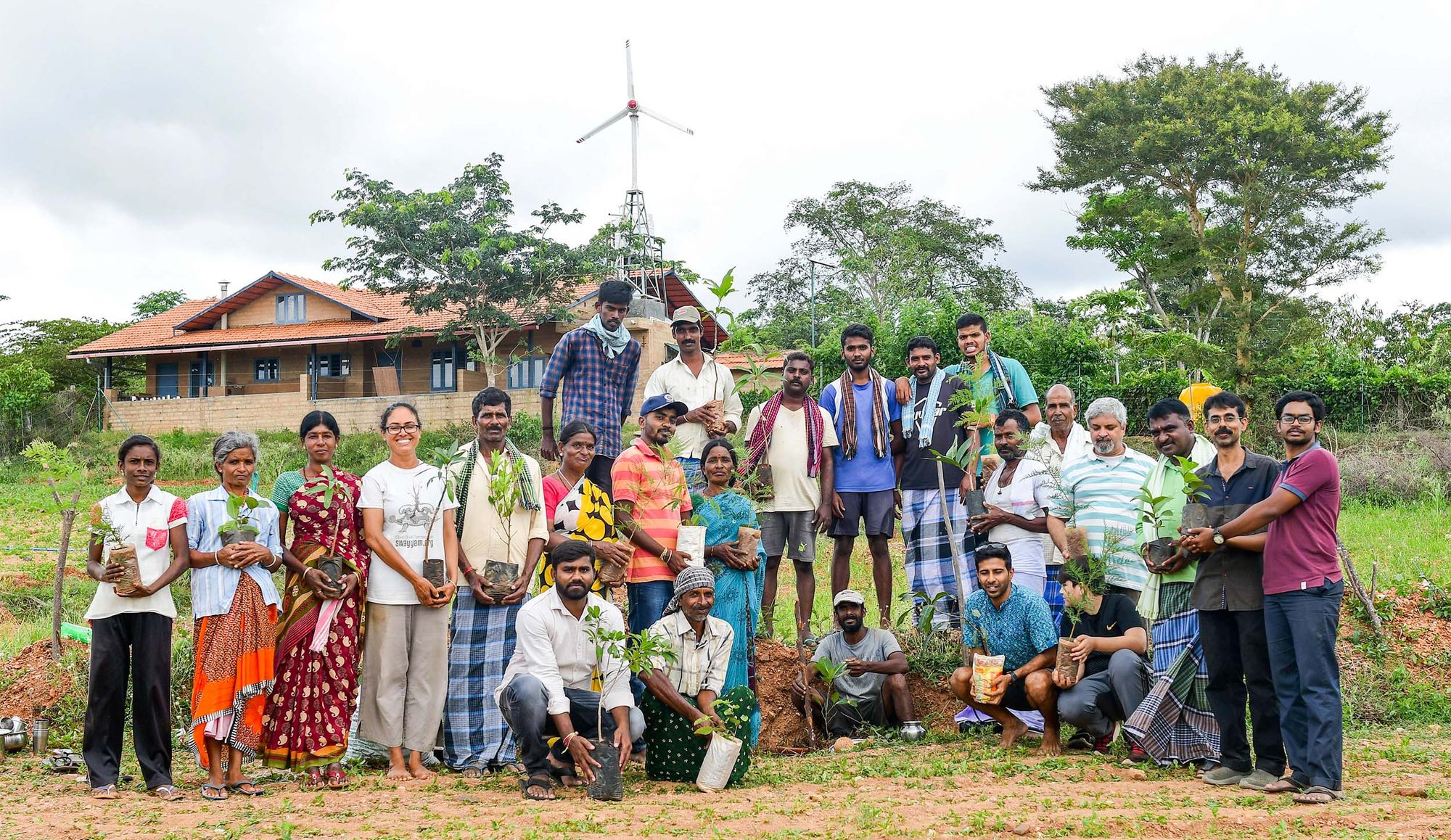
By 2020, Vasudha had become home to more than 700 saplings of drought-resistant trees and crops. Besides fruit and fodder trees, these polyculture fields have all the staples farmers need: multiple varieties of millets (foxtail, little, barnyard, pearl, etc.), pulses (horse gram, cowpea and urad, to name a few), oilseeds (sunflower, niger, groundnut, sesame, etc.) and a wide variety of spices and seasonal vegetables. Enthused by Vasudha’s progress, two other collectives with a combined landholding of 60 acres joined the project in the same year. Though the Covid-19 pandemic slowed down their progress, work is currently underway on rebuilding soil fertility on these two farms.
For the people of Yelachetti, the 1000 Trees Project is a crucial source of nutritional security. Most of the yield goes towards feeding farmers’ families and livestock and bartering with the local community; only the surplus is traded or sold. With 100 main productive trees and 300 support species planted per acre of collective land in addition to crops, the project also makes farms more climate resilient. “When droughts hit and crops fail, trees become fallback options,” Solanki explains. “The fruit and timber they yield become sources of revenue for the farmer, while fodder trees sustain livestock.”
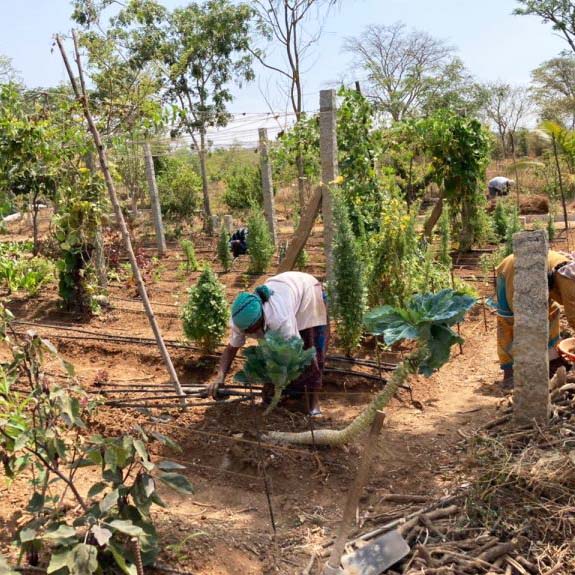
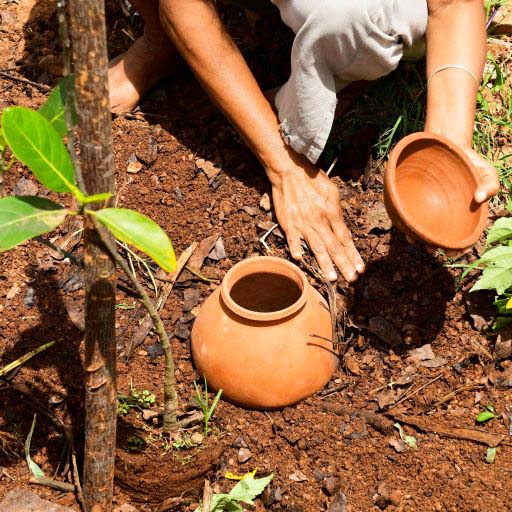
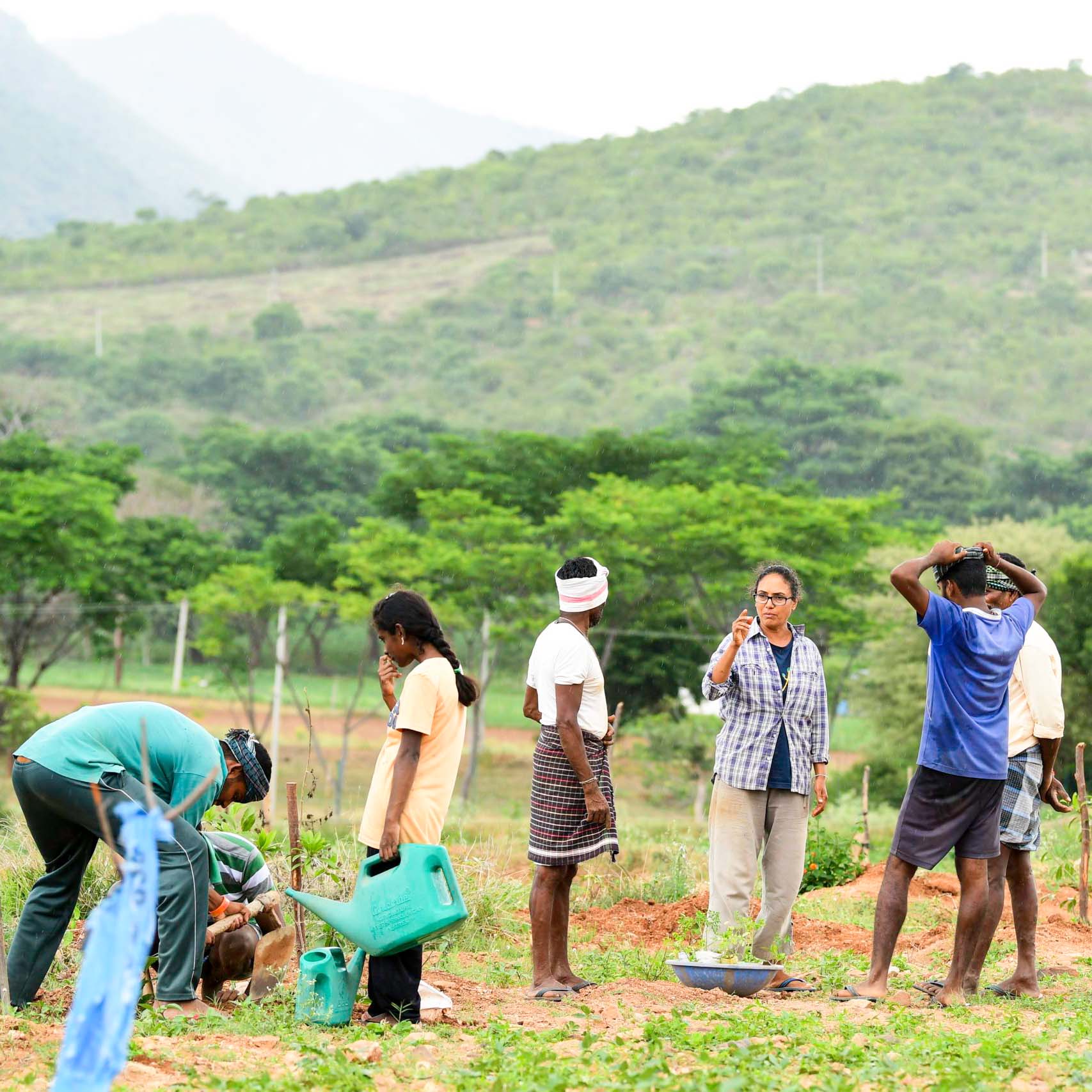
To be sure, the idea of climate-resilient regenerative agriculture is not new. “Indigenous and rural communities in India have historically practised forms of farming that worked with rather than against nature, did not pollute or exploit the environment and did not create waste,” Solanki points out. Instead, they relied on minimum tillage, natural inputs and soil mulching. They sowed diverse native seeds and practised multi-cropping and polyculture as well as rain-fed agriculture. That changed in the 1960s and ’70s, when the so-called Green Revolution pushed farmers towards monocropping, bioengineered seeds, intensive tilling, mechanized irrigation and chemical fertilizers and pesticides. Over time, these extractive practices led to overexploitation of groundwater and large-scale desertification of India’s farmlands. More recently, the situation has been exacerbated by the consequences of climate change: rising temperatures, unseasonal rains, increasing aridity and more frequent and severe droughts and floods. In the past six years, such climate-related vagaries have led to the loss of over 84 million acres of India’s cropped area. The worst affected are India’s smallholder farmers, a hundred of whom become landless every hour.
Against this backdrop of climate vulnerability and farmer dispossession, the Intergovernmental Panel on Climate Change (IPCC), in a special report on Climate Change and Land, suggested that regenerative agriculture “can be effective in building resilience of agro-ecosystems.” According to environmentalist Paul Gerard Hawken, regenerative farms can act as carbon sinks and thus mitigate the impact of global warming due to the presence of perennial tree systems. Some even propose that such forms of agriculture can potentially reverse climate change. While that’s a tall and contested claim, there is broad consensus that regenerative tree-based agriculture is good for soil health and offers other environmental benefits such as conserving fast-depleting natural resources like water, reducing waste, decreasing soil erosion and limiting pest attacks. Rejecting costly bioengineered seeds and chemical inputs also reduces farmers’ financial burden even as the yield from trees gives them an additional source of income.
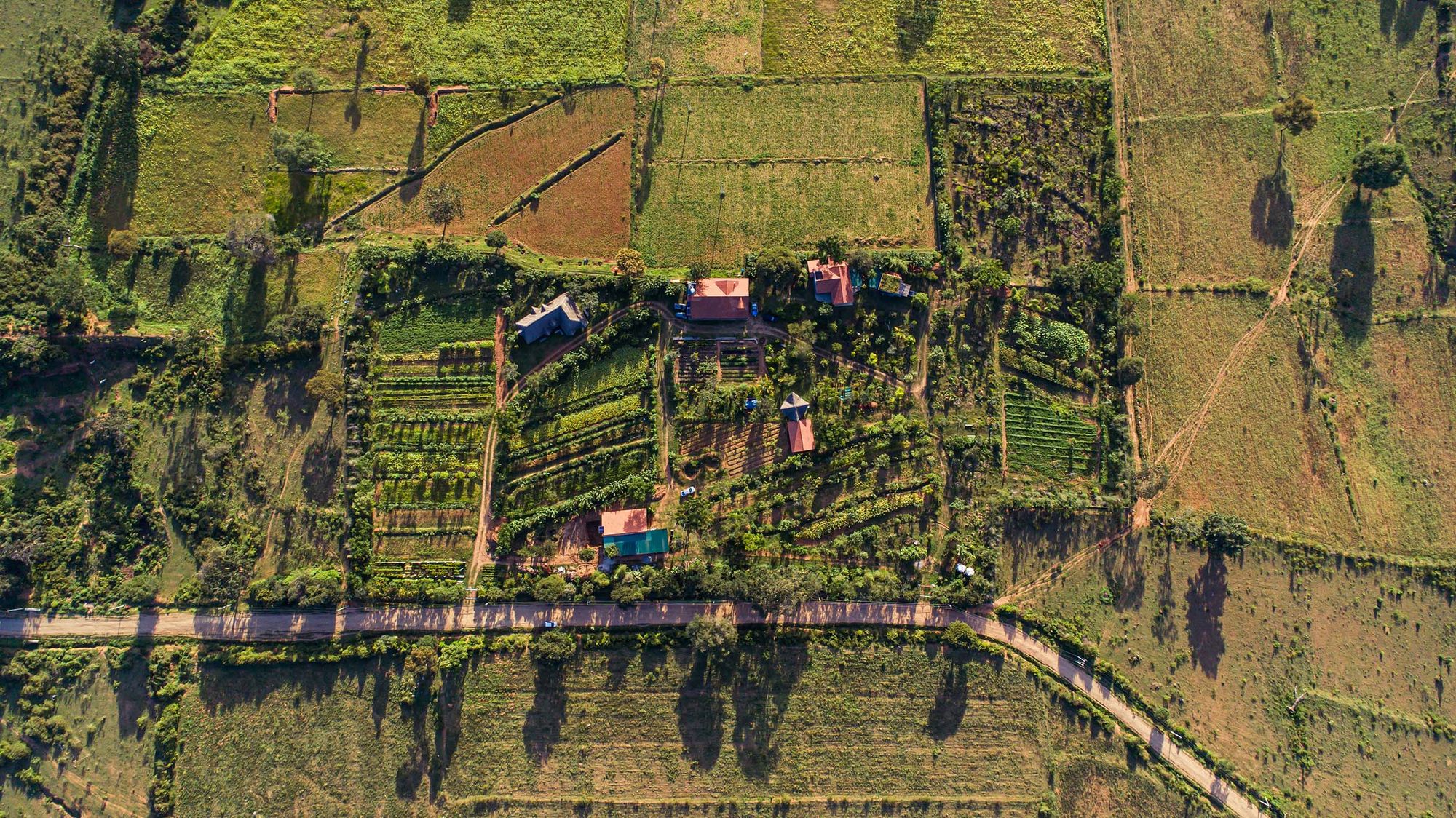
However, most farmers in India have been embedded in industrial farming systems for decades now and lack generational knowledge about regenerative practices and access to native seeds. Their small landholdings are not conducive to tree-based farming. Besides, depending on the scale of land degradation, establishing a perennial tree system can take several years. For small and marginal farmers who can ill-afford to forgo a single season’s crop, that can be a daunting proposition. That’s where a non-profit like Swayyam comes in. By organizing farmers into collectives and sharing know-how and resources, it is able to make their transition to regenerative farming possible and sustainable.
With the 1000 Trees Project, Solanki has seen even the staunchest skeptics come around. Farmers who were earlier not in favour of digging trenches now admit that water harvesting has transformed their land. They are cognizant that trees regulate the temperature of their farms and the moisture in their soils, and saplings don’t need to be watered as much or as often because there is less evaporative loss. They have also started mulching to conserve water.
“It’s not a big leap,” Solanki says. “But if everyone starts doing this, that’ll be a major shift.”
Main image: A view of Open Shell Farm in Yelachetti, Karnataka, India. Photo: Swayyam/Teepoi LLP.










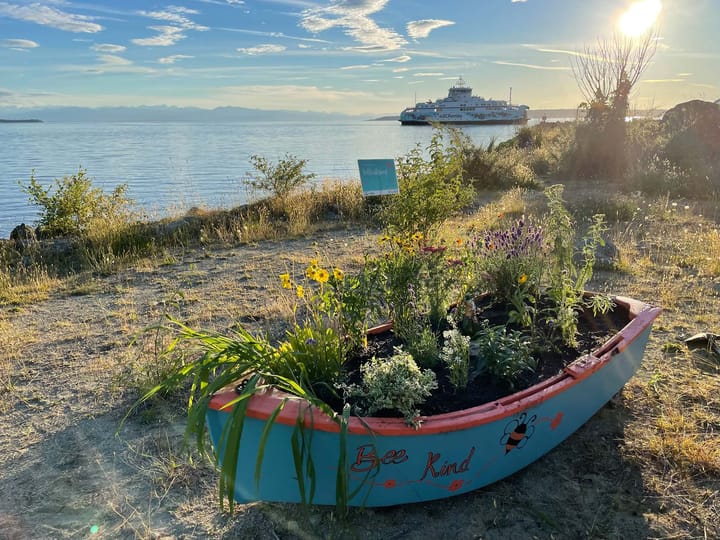


Comments ()